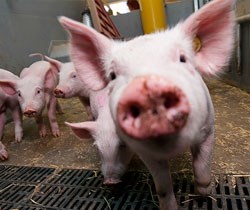Good leg health in sows – better phenotypes for genetic and genomic selection

The long term goal of this study is to improve sow and piglet welfare by genetic selection for improved leg quality in sows. Lameness and poor leg quality is a serious welfare problem in pig production today. Poor leg quality is, apart from being associated with pain and discomfort for the sow, associated with other problems such as increased risk for skin lesions (e.g. shoulder ulcers) and increased risk of crushing of piglets. We will focus on improving phenotypic recordings and development of a genetic test for leg strength. Records on sow activity will be collected using “accelerometers”, so called data loggers. Data from data loggers will be validated against visual scorings of activity, lameness and leg conformation recorded by technicians. Records of leg strength at 100 kg, activity records and records from visual scoring of activity and leg conformation at first farrowing will be related to reproduction traits and piglet survival. We have probably identified a gene regulating the heredity for the hind leg position (dorsoflexion of the interphalangeal joint) in pigs. In the project proposed here we will collect samples from more animals to verify our preliminary findings. The aim is to enable identification of breeding animals carrying genes for poor leg posture by a simple blood sample. Results will assist the breeding of a healthier pig with increased longevity.